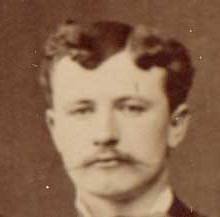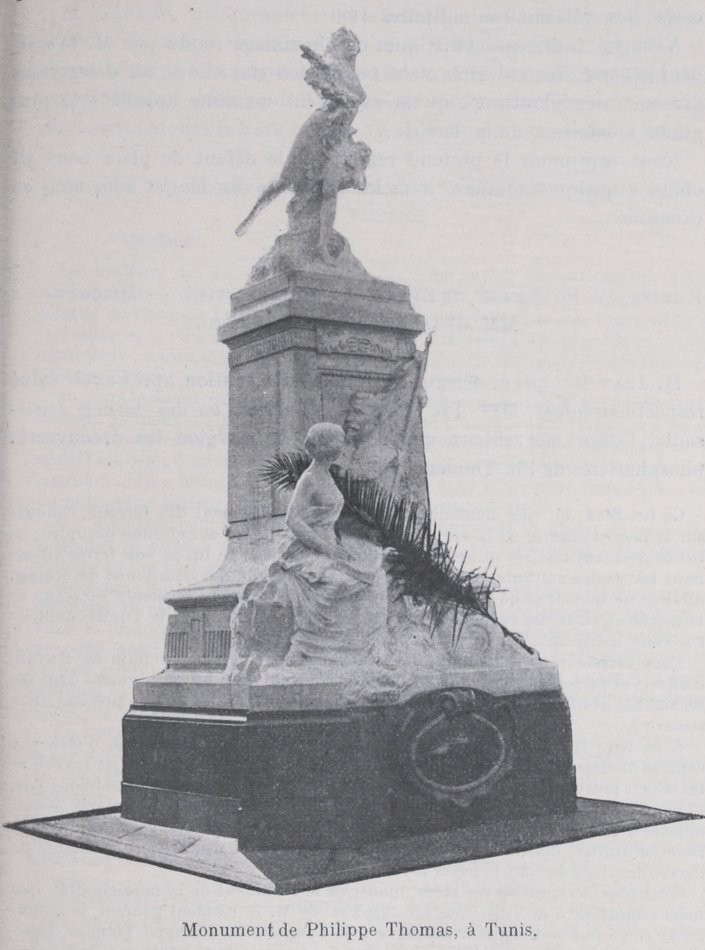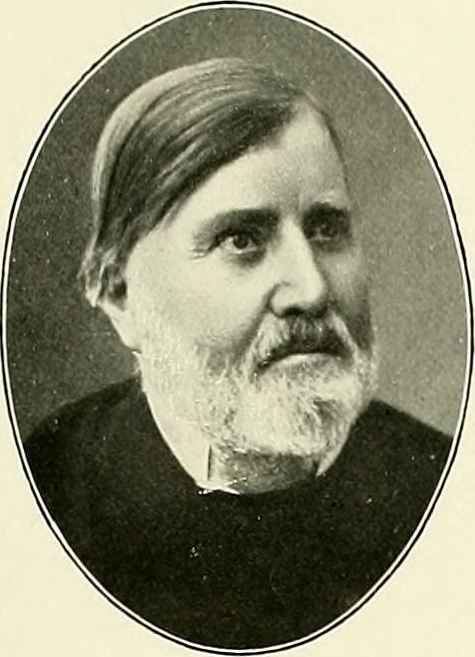|
Georges Rolland
Georges Rolland (23 January 1852 – 25 July 1910) was a French geologist and industrialist, a member of the Corps des mines, who worked in Algeria in the 1880s. He made important discoveries about the underground hydrology of the Sahara. He was a leading advocate of a trans-Sahara railway to link French colonial possessions in West Africa. After returning to France he explored the geology of the Briey iron ore basin in Lorraine. He married the heiress of a Lorraine steelworks, and became president of the Société métallurgique de Gorcy and the Aciéries de Longwy, and director of various other enterprises. Early years Georges Rolland was born in Paris on 23 January 1852. His parents were Gustave Rolland (1809–71) and Bernardine Marie Léonie Dauss. His father was a former officer of the Engineers who became a Deputy. His uncle was the inventor Eugène Rolland (1812–85). At a very young age he was accepted by the École Navale and the École Polytechnique, and chose the É ... [...More Info...] [...Related Items...] OR: [Wikipedia] [Google] [Baidu] |
George Rolland
Major George Murray Rolland VC (12 May 1869 – 9 July 1910) was a recipient of the Victoria Cross, the highest and most prestigious award for gallantry in the face of the enemy that can be awarded to British and Commonwealth forces. Early life He was born on 12 May 1869 at Wellington, Madra Presidency, British India, the son of Major P. M. Rolland, R.A. and educated at Harrow and the Royal Military College, Sandhurst, before being commissioned into the Bedfordshire Regiment in November 1889. He transferred to the Indian Staff Corps on the 11 August 1891. He was appointed a double company commander with the 1st Bombay Grenadiers on 4 February 1901, and appointed a Special Service Officer on the Staff of the Somaliland Field Force on 25 October 1902, leaving Bombay via Aden for British Somaliland the previous day. Details He was 33 years old, and a captain in the 1st Bombay Grenadiers, Indian Army, employed Berbera -Bohotle Flying Column during the Third Somaliland Exped ... [...More Info...] [...Related Items...] OR: [Wikipedia] [Google] [Baidu] |
Constantine (Algeria)
Constantine ( ar, قسنطينة '), also spelled Qacentina or Kasantina, is the capital of Constantine Province in northeastern Algeria. During Roman times it was called Cirta and was renamed "Constantina" in honor of emperor Constantine the Great. It was the capital of the French department of Constantine until 1962. Located somewhat inland, Constantine is about from the Mediterranean coast, on the banks of the Rhumel River. Constantine is regarded as the capital of eastern Algeria and the commercial center of its region, and it has a population of about 450,000 (938,475Office National des Statistiques, Recensement General de la Population et de l’Habitat 2008 2008 population census. Accessed on 2016-01-27. with the agglomeration), making it the thir ... [...More Info...] [...Related Items...] OR: [Wikipedia] [Google] [Baidu] |
Zaghouan
Zaghouan (or Zaghwan; ar, زغوان '' ; ber, ⵣⴻⵖⵡⴰⵏ / Zeɣwan)'' is a town in the northern half of Tunisia. Situated on a low ridge of the Dorsale Mountains, the town has a mild climate and presents a green aspect. Cold water from here was taken by the Zaghouan Aqueduct to Carthage. The town is famous for its roses, originally cultivated by Muslim refugees from Spain in the seventeenth century. The town is located around 60 km due south of Tunis and around 50 km inland (west) from the Gulf of Hammamet and has an estimated population of around 20,837 (2014). It is the capital of the Zaghouan Governorate. On the mountain south of the city is the Roman Water Temple Djebel Zaghouan (Temple de Eaux), source of an aqueduct which used to take water to the city of Carthage over 100 km away. The ruins here are illustrated in Fisher's Drawing Room Scrap Book, 1840, as 'Temple and Fountain of Zagwhan', the subject of a poem by Letitia Elizabeth Landon. E ... [...More Info...] [...Related Items...] OR: [Wikipedia] [Google] [Baidu] |
Jurassic
The Jurassic ( ) is a Geological period, geologic period and System (stratigraphy), stratigraphic system that spanned from the end of the Triassic Period million years ago (Mya) to the beginning of the Cretaceous Period, approximately Mya. The Jurassic constitutes the middle period of the Mesozoic, Mesozoic Era and is named after the Jura Mountains, where limestone strata from the period were first identified. The start of the Jurassic was marked by the major Triassic–Jurassic extinction event, associated with the eruption of the Central Atlantic magmatic province, Central Atlantic Magmatic Province. The beginning of the Toarcian Stage started around 183 million years ago and is marked by an extinction event associated with widespread Anoxic event, oceanic anoxia, ocean acidification, and elevated temperatures likely caused by the eruption of the Karoo-Ferrar, Karoo-Ferrar large igneous provinces. The end of the Jurassic, however, has no clear boundary with the Cretaceous and i ... [...More Info...] [...Related Items...] OR: [Wikipedia] [Google] [Baidu] |
Georges Le Mesle
Georges Le Mesle (21 August 1828 – 31 December 1895) was a French geologist. He is best known for his work on the geology of northern and southern Tunisia, which he undertook between 1887 and 1891. Life Georges Le Mesle was a geologist, paleontologist, correspondent of the National Museum of Natural History (France), National Museum of Natural History and member of the Scientific Commission of Tunisia. Le Mesle was born in Paris on 21 August 1828. He became a corresponding geologist of the Museum of Natural History of Paris, which charged him with a mission to Indochina. He undertook useful work in Tonkin. Some of his photographs have been preserved by the Paris Society of Geography. The society calls them "photos of the Ba Keng Buddha, near Angkor, 1864", but the date is dubious since Angkor had only recently been found by European travellers. Le Mesle visited Algeria several times, and built up a valuable collection of fossils, which were used by M. Peron in his works on Alg ... [...More Info...] [...Related Items...] OR: [Wikipedia] [Google] [Baidu] |
Philippe Thomas
Philippe Thomas (4 May 1843 – 12 February 1910) was a French veterinarian and amateur geologist who discovered large deposits of phosphates in Tunisia. Despite the huge economic importance of his discovery, he received little recognition during his life. Monuments to Thomas in Tunisia were destroyed after the country gained independence. Career Early years (1843–85) Philippe Thomas was born in Duerne, Rhône on 4 May 1843. He attended the École nationale vétérinaire d'Alfort, where he was a brilliant student, and the Cavalry School. He was named an Army Veterinarian in 1865. He was assigned to Algeria but returned to France at the start of the Franco-Prussian War (1870) and fought in various engagements. He returned to Algeria after the war and took part in suppression of the revolt in the Kabylie in 1871. In his spare time, he studied geology, paleontology, and other scientific disciplines. Thomas became a qualified geologist. Thomas classified the succession of Eoc ... [...More Info...] [...Related Items...] OR: [Wikipedia] [Google] [Baidu] |
Ernest Cosson
Ernest Saint-Charles Cosson (22 July 1819 – 31 December 1889) was a French botanist born in Paris. Cosson is known for his botanical research in North Africa, and during his career he participated in eight trips to Algeria. In several of these he was accompanied by Henri-René Le Tourneux de la Perraudière (1831-1861), whom he honoured in the naming of several species and genera (e.g., ''Perralderia'', ''Galium perralderii''). In 1863 he was elected president of the ''Société botanique de France'', and from 1873 to 1889, he was a member of the ''Académie des sciences''. In 1882 Jules Ferry, as Minister of Public Instruction, decided to create a mission to explore the Regency of Tunisia. The expedition was headed by Cosson and included the botanist Napoléon Doumet-Adanson and other naturalists. In 1884 a geological section under Georges Rolland was added to the Tunisian Scientific Exploration Mission. Rolland was assisted by Philippe Thomas from 1885 and by Georges Le Me ... [...More Info...] [...Related Items...] OR: [Wikipedia] [Google] [Baidu] |
Touggourt
Touggourt ( ar, ﺗﻗﺮت or تڤرت; ber, ⵜⵓⴳⵓⵔⵜ, Tugurt, lit=the gateway or 'the gate') is a city and commune, former sultanate and capital of Touggourt District, in Touggourt Province, Algeria, built next to an oasis in the Sahara. As of the 2008 census, the commune had a population of 39,409 people, up from 32,940 in 1998, and an annual growth rate of 1.8%. Touggourt's urban area includes the communes of Nezla, Tebesbest and Zaouia El Abidia, for a total population of 146,108. Touggourt is notable for its date trees. It was formerly surrounded by a moat, which the French filled up. Bradt Travel Guides describe it as "largely a modern town of block architecture" and "largely unattractive. The centre is quiet most of the day due to the heat but is more active at night when people take to the streets." History In 1414 the Sultanate of Tuggert was founded in southern Algeria. The known Sultans (and one female ruler) were: *Ali II *Mabruk (Mubarak) *Ali III ... [...More Info...] [...Related Items...] OR: [Wikipedia] [Google] [Baidu] |
Oued Righ
The Oued Righ (also spelled Oued Rir', Oued Rirh, Wadi Righ) is a region of the northeastern Algerian Sahara. It includes a number of oases, the principal centre being Touggourt. Some of these oases speak Oued Righ Berber Tugurt, also known as Oued Righ Berber and Temacine Tamazight, is a Zenati Berber variety spoken in some of the oases of the northeastern Oued Righ region around Touggourt in Algeria ) , image_map = Algeria (centered orthogra .... Sahara {{Algeria-geo-stub ... [...More Info...] [...Related Items...] OR: [Wikipedia] [Google] [Baidu] |
Biskra
Biskra ( ar, بسكرة ; ; Latin Vescera) is the capital city of Biskra Province, Algeria. In 2007, its population was recorded as 307,987. Biskra is located in northeastern Algeria, about 248 miles (400 km) from Algiers, 71 miles (115 km) southwest of Batna and 137 miles (222 km) north of Touggourt. It is nicknamed "The Queen of the Zibans", "The Door of the Desert" or "The Saharan Nice" because of its location at the beginning of the Sahara Desert. Due to its geographical location, its climate and natural resources, particularly farming, Biskra has always been a hub and a crossroad between the cities in the north and south. It has seen the passage of several civilizations, from the Romans and the Arabs to the French. In 1844, Biskra became a French garrison, which saw fighting during rebellions in 1849 and 1871. Currently the city of Biskra has 28 neighborhoods, including the three principal neighborhoods of, Korra, City 60 Logements, and Equipment Zones. I ... [...More Info...] [...Related Items...] OR: [Wikipedia] [Google] [Baidu] |
Batna, Algeria
Batna ( ar, باتنة, Latn, ar, Bātnah) is the main city and commune of Batna Province, Algeria. With a population of 290,645 (2008 census) it is the fifth largest city in Algeria. It is also one of the principal cities of the Chaoui area and is considered the capital of Aurès. History The first solid foundations (a military encampment) of the city were erected by a French garrison in 1844, with a strategic mission to create a permanently guarded access point for the main Sahara road. Batna's geographical location offers a natural break through the Atlas Mountains. The Romans did not detect this passage in their early invasion phase. The ancient cities of Timgad and Lambese, built around the first century CE, are living examples of the importance that the Romans gave to commercial control over the region. Signature and proclamation of the Algerian revolution Batna The inhabitants of the city revolted against the French authorities at the beginning of colonization. Th ... [...More Info...] [...Related Items...] OR: [Wikipedia] [Google] [Baidu] |
Tuareg People
The Tuareg people (; also spelled Twareg or Touareg; endonym: ''Imuhaɣ/Imušaɣ/Imašeɣăn/Imajeɣăn'') are a large Berber ethnic group that principally inhabit the Sahara in a vast area stretching from far southwestern Libya to southern Algeria, Niger, Mali, and Burkina Faso. Traditionally nomadic pastoralists, small groups of Tuareg are also found in northern Nigeria. The Tuareg speak languages of the same name (also known as ''Tamasheq''), which belong to the Berber branch of the Afroasiatic family. The Tuaregs have been called the "blue people" for the indigo dye coloured clothes they traditionally wear and which stains their skin. They are a semi-nomadic people who practice Islam, and are descended from the indigenous Berber communities of Northern Africa, which have been described as a mosaic of local Northern African (Taforalt), Middle Eastern, European (Early European Farmers), and Sub-Saharan African-related ancestries, prior to the Arab expansion. Tuareg peopl ... [...More Info...] [...Related Items...] OR: [Wikipedia] [Google] [Baidu] |







